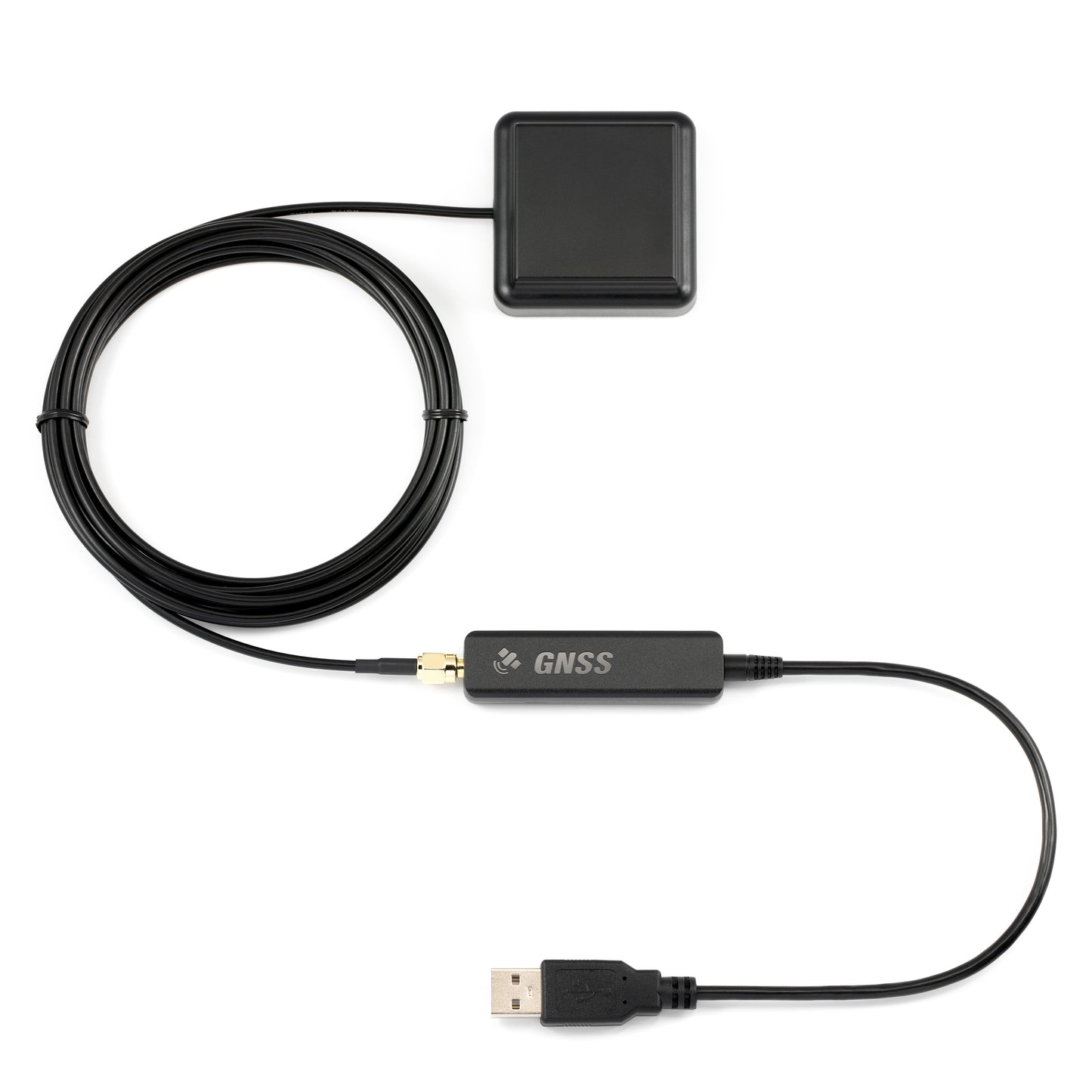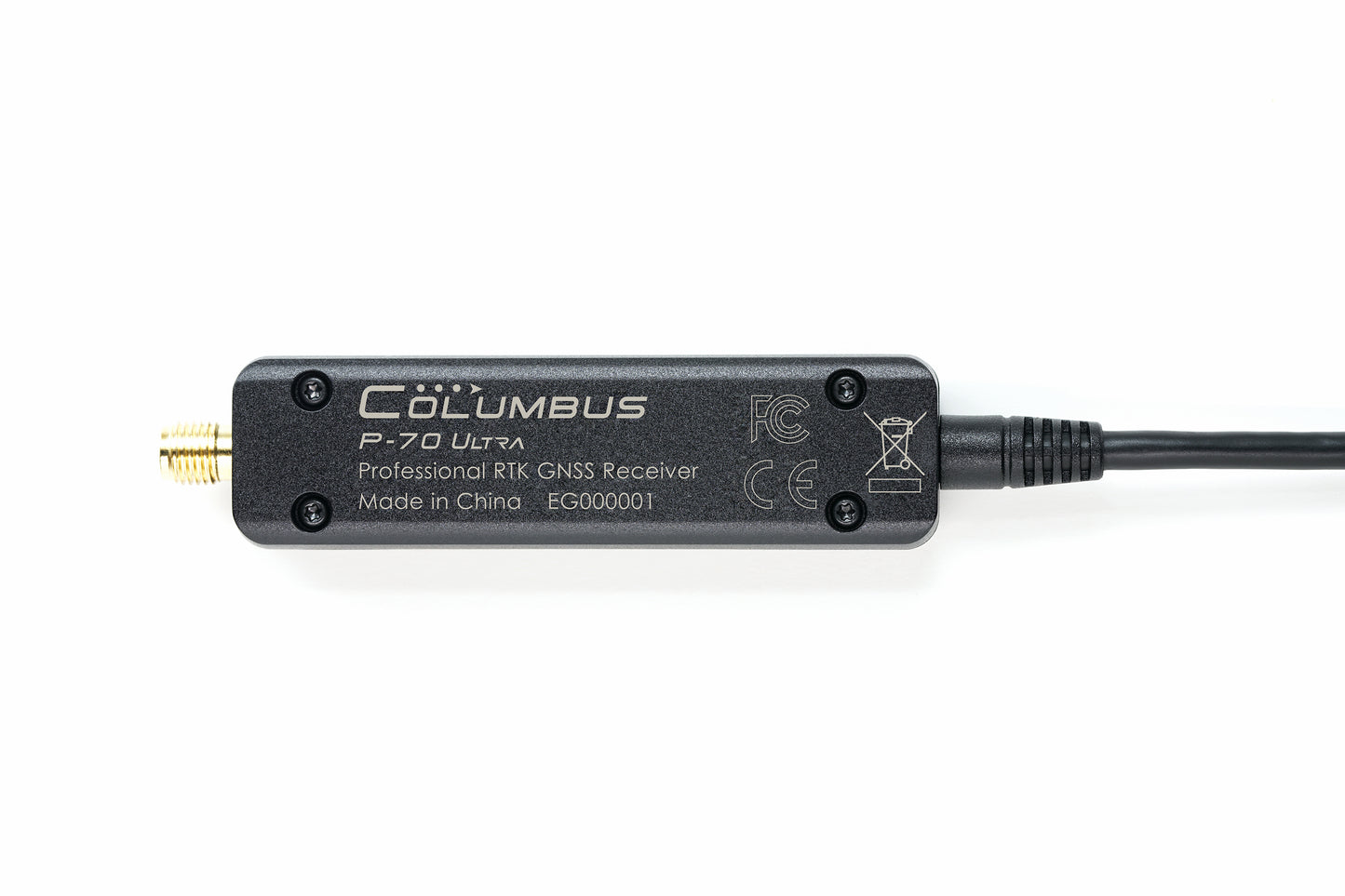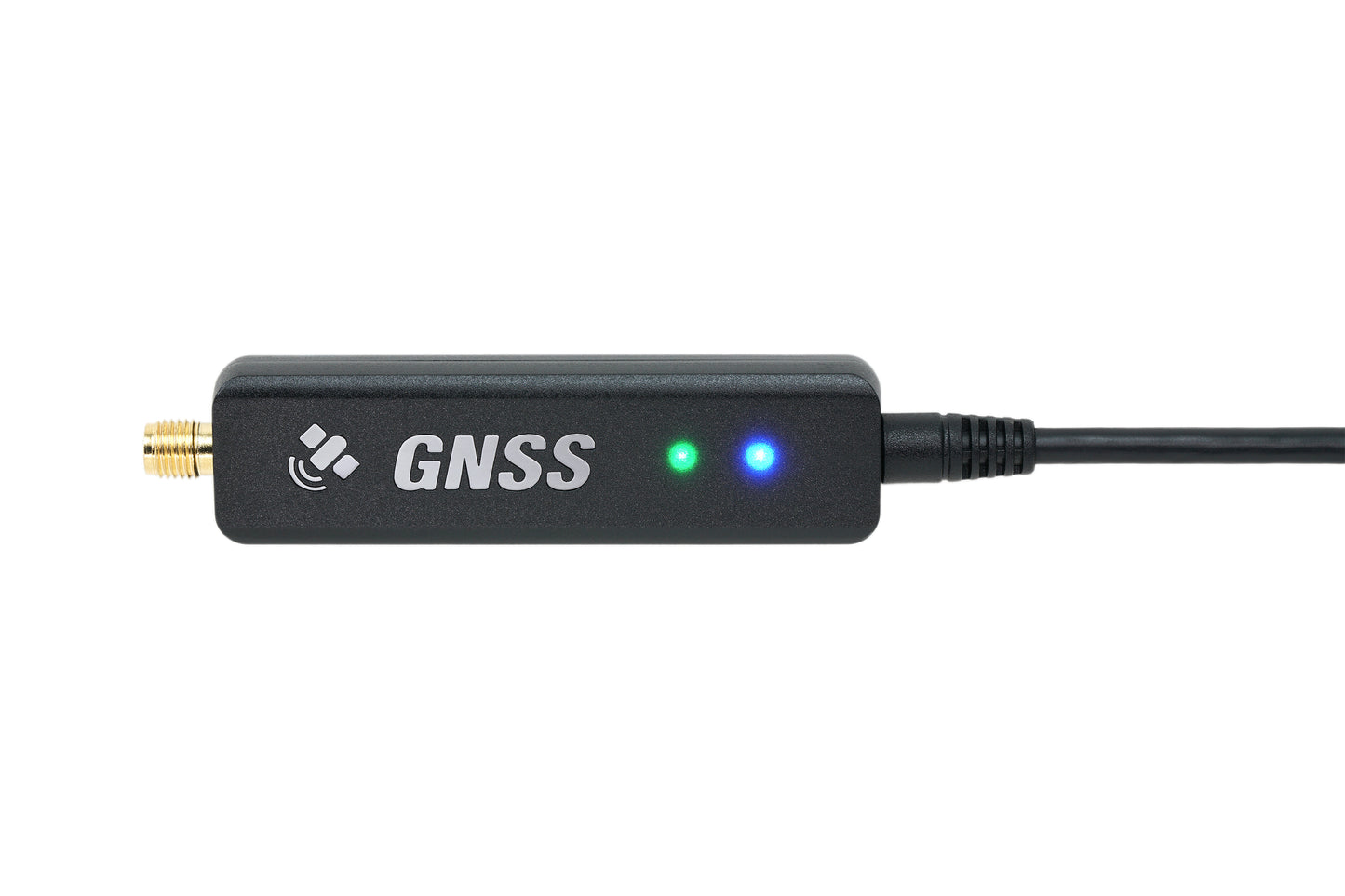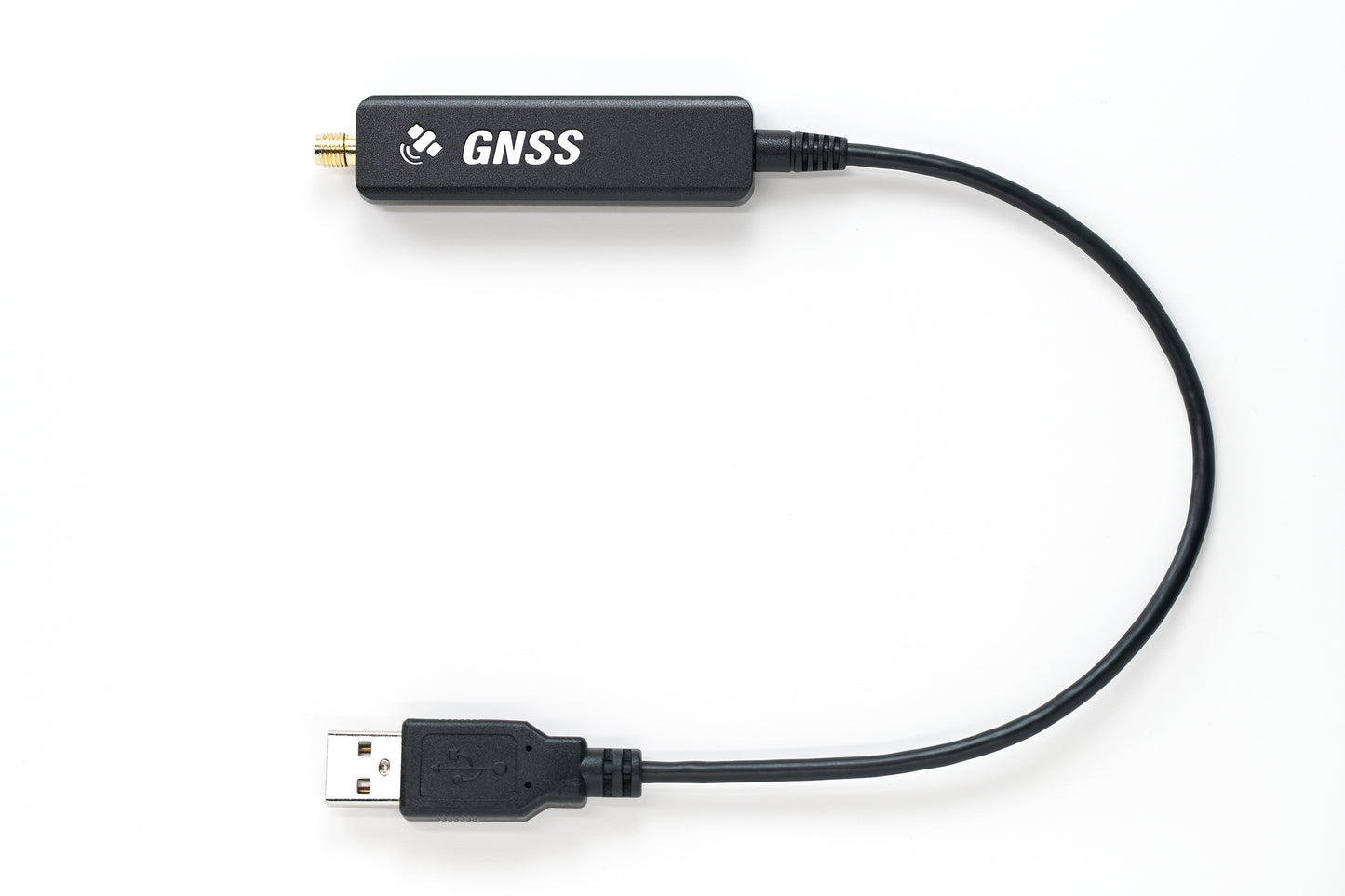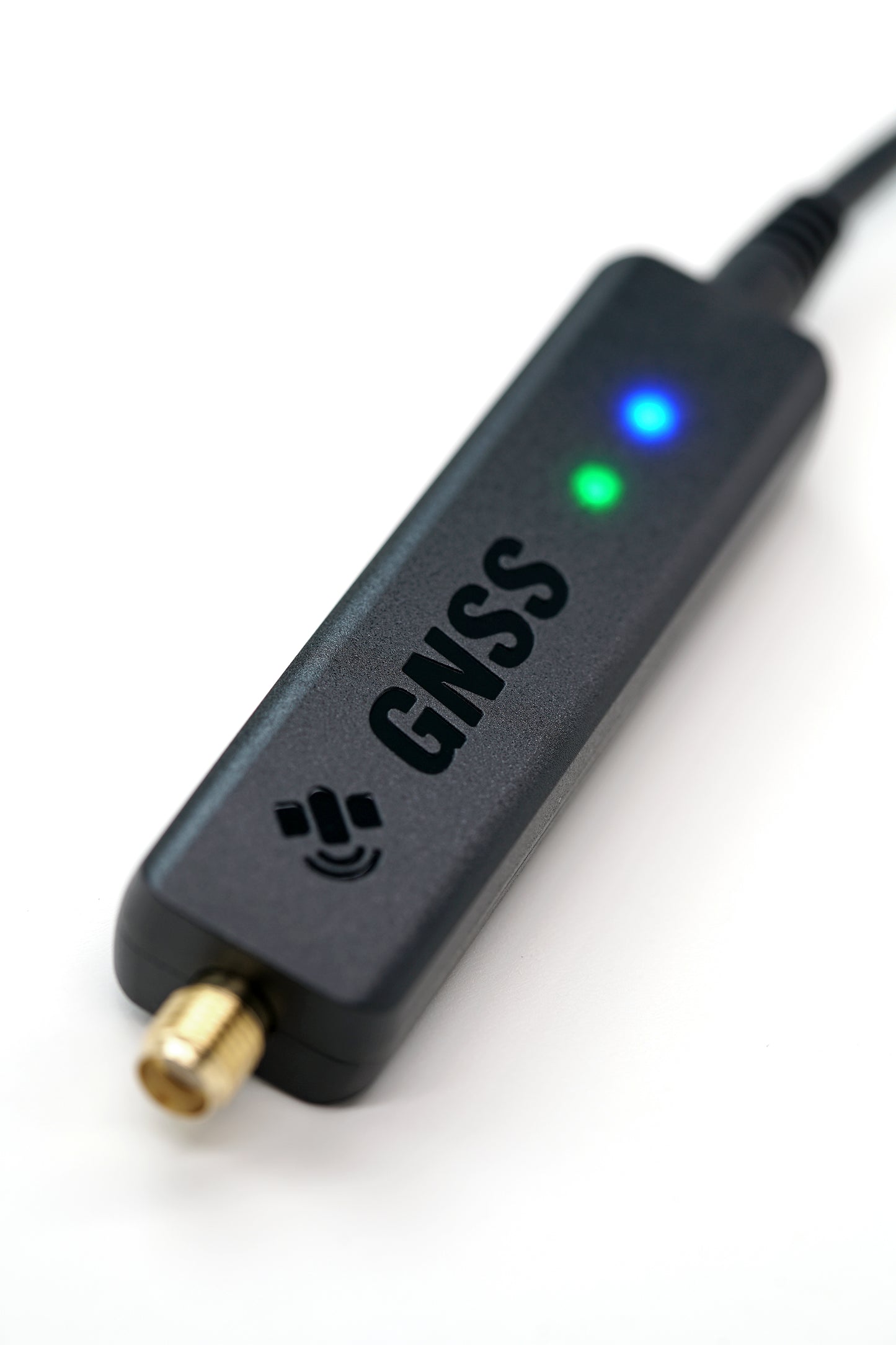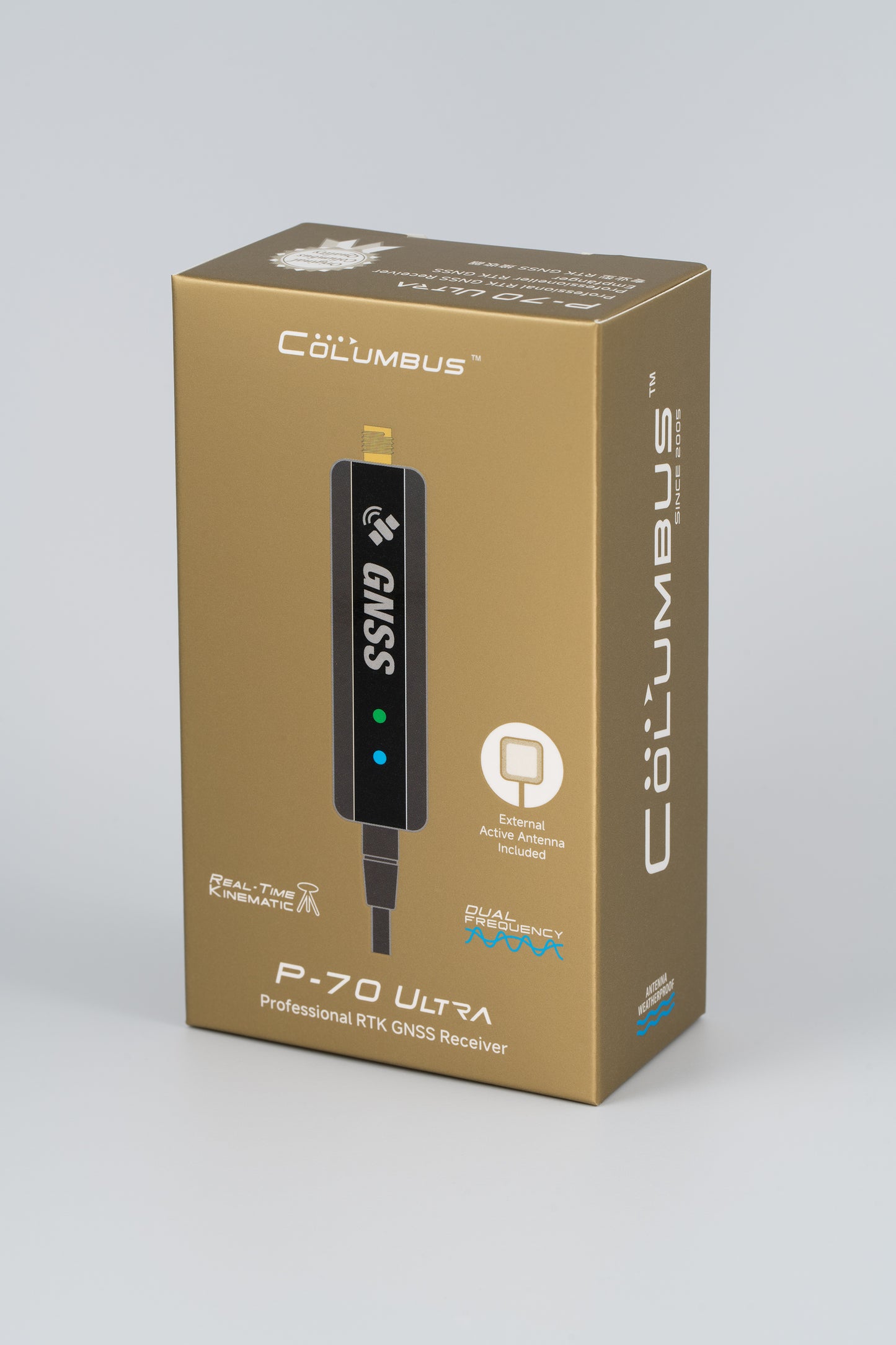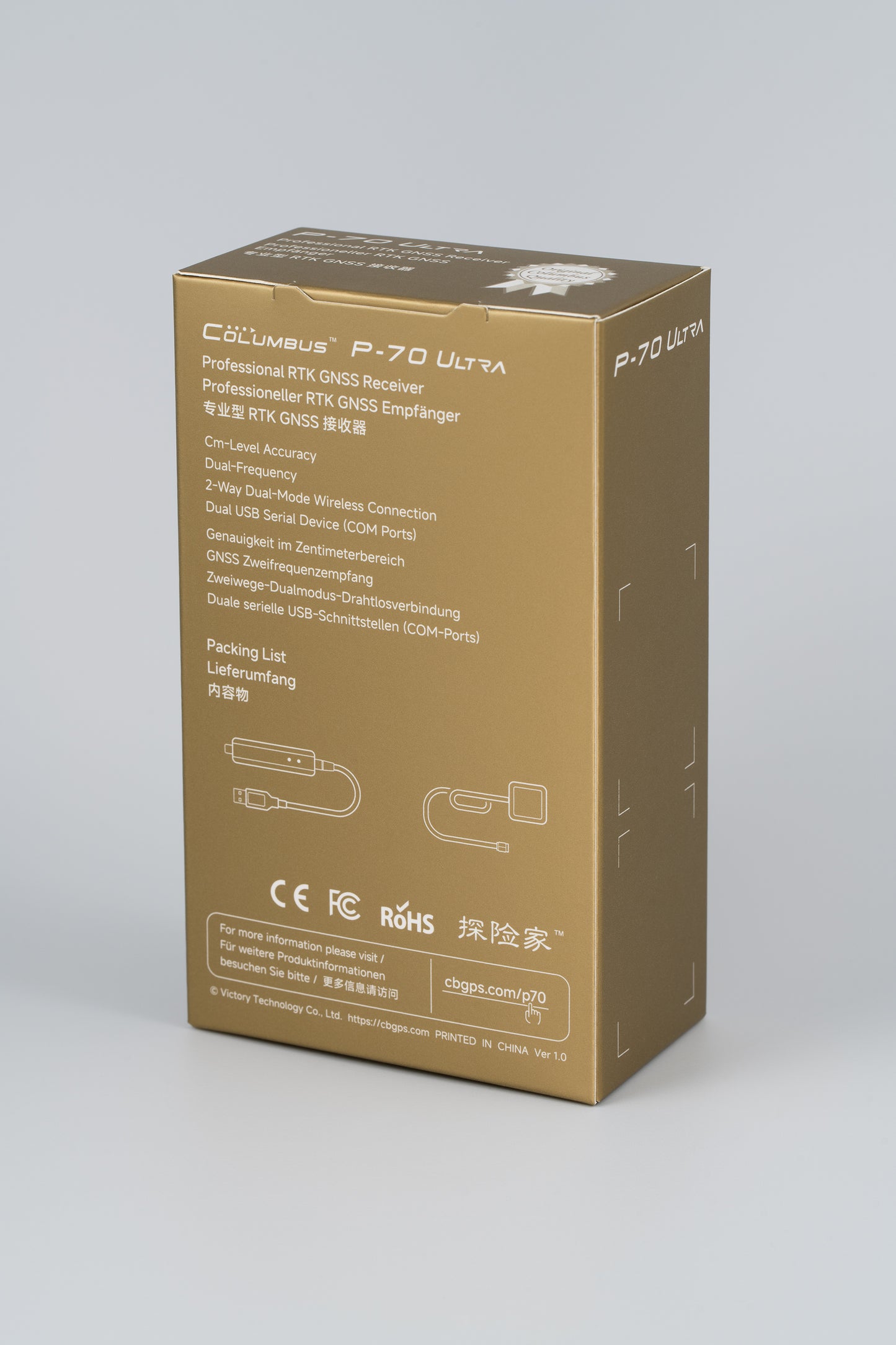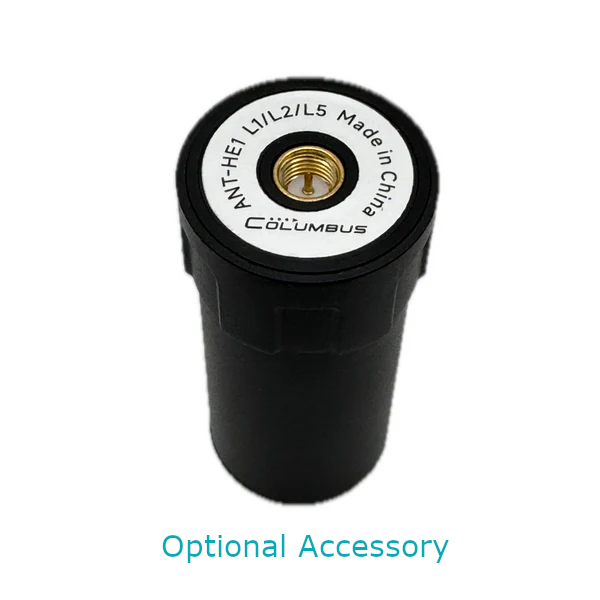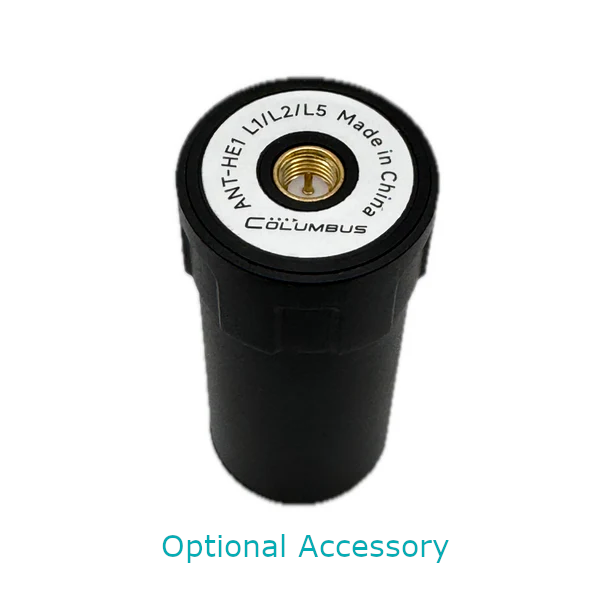Columbus P-70 Ultra Precise GNSS Receiver (USB / UART and Bluetooth Interfaces, 1 cm accuracy with RTK, 30 cm accuracy standalone)
Columbus P-70 Ultra Precise GNSS Receiver (USB / UART and Bluetooth Interfaces, 1 cm accuracy with RTK, 30 cm accuracy standalone)
Country of Origin: China
Couldn't load pickup availability
Volume Discount Table
| Minimum Qty | Discount |
|---|---|
| 2 + | 5% off |
| 5 + | 6% off |
| 10 + | 7% off |
| 100 + | 9% off |
The Columbus P-70 Ultra is Columbus’ 2025 flagship GNSS receiver, tailored for professionals who require dependable and precise positioning. It provides 1.0 cm horizontal and 1.5 cm vertical accuracy in RTK mode, along with 30 cm accuracy in standalone mode, making it suitable for a diverse range of applications.
Its compact, lightweight design ensures easy portability, while versatile connectivity options—USB / UART and Bluetooth —enable seamless integration with various devices. Featuring a high-gain waterproof dual-band antenna (L1 and L5), the P-70 Ultra excels in surveying, mapping, RTK infrastructure development, and other professional tasks. Packed with advanced capabilities at an affordable price, it’s the perfect solution for high-precision needs.

Key Features:
Centimeter-Level Accuracy: Achieves 1.0 cm horizontal and 1.5 cm vertical accuracy in RTK mode, and 30 cm accuracy in standalone mode, ideal for precision surveying, mapping and other professional applications.

Dual-Frequency GNSS Capability: Supports L1 and L5 bands for improved signal reception, faster positioning, and better accuracy in challenging environments.

High-Gain External Antenna: Includes an external antenna (29dB for L1, 27dB for L5) with IP67 waterproofing, suitable for outdoor use.

Flexible Antenna Design: Comes with a magnetic high-gain antenna for vehicles and supports optional helical antennas for UAVs and other specific applications.

Compact, Lightweight and Low Power Consumption: Measures 65 x 18 x 10 mm and weighs only 23g, making it easy to carry or integrate into portable systems. Operates on 5V/80mA, providing energy-efficient performance for long-term use.

Multiple Connection Options: Supports USB, Bluetooth 5.1 (dual-mode SPP and BLE), and an optional UART 3.3V TTL adapter cable for seamless integration with various devices.

RTK Rover and Base Operating Modes: Functions as a rover connected to a CORS network or as a base station connected to NTRIP software for RTCM correction data streaming.

Fast Initialization and Reduced Multipath Effects: Dual-frequency reduces interference and speeds up signal acquisition compared to single-frequency receivers. Works with GPS, BeiDou, GLONASS, Galileo, QZSS, and IRNSS for global coverage and reliable performance.


Test and Demo:
1. RTK Mode — Static Positioning Test
• Objective: Evaluate the static positioning accuracy.
• Duration: 1 hour
• Refresh Rate: 1 Hz
• Time: UTC 2024-12-31 14:24:01 to 15:24:00
• Method: The receiver’s antenna was kept stationary while collecting 3600 consecutive trajectory points. The average position was calculated as the center point, and the CEP (Circular Error Probable) value was determined.
• Conditions: Under clear skies, with a baseline distance of approximately 500 meters between the reference station and the P-70 Ultra, continuously receiving RTK correction data.
• Download the raw data recorded by P-70 Ultra


Results:
• CEP(50%) Accuracy: 0.3034 cm, surpassing the specified 1.0 cm accuracy. This means 50% of the positioning points fall within a circle with a radius of 0.3034 cm centered on the average position.
• CEP(100%) Accuracy: 1.0618 cm, also demonstrating excellent performance.
2. RTK Mode — Dynamic Stability Test
• Objective: Assess the positioning and tracking accuracy of the P-70 Ultra during motion.
• Duration: 785 seconds
• Refresh Rate: 1 Hz
• Time: UTC 2025-01-03 14:05:55 to 14:18:59
• Rotations: 20 cycles
• Method: The antenna’s phase center was positioned on the edge of a circular disc with a 20 cm radius. The disc was rotated at a speed of approximately 40 seconds per cycle, corresponding to a linear velocity of about 3.1 cm/s.
• Conditions: Under clear skies, with a baseline distance of approximately 500 meters between the reference station and the P-70 Ultra, continuously receiving RTK correction data.
• Download the raw data recorded by P-70 Ultra

The images on the top left and right are synchronized visual records from the test.

Results:
Tracking ultra-slow motion trajectories is a challenge for RTK devices. During this test:
• The P-70 Ultra’s recorded trajectory coincided with the target path of a circular disc with a 19.5 cm radius (measured from the antenna’s phase center).
• Across multiple rotations, the trajectory width consistently remained within 1 cm, demonstrating exceptional tracking consistency.
3. SBAS Mode — Independent Static Positioning Test
• Objective: Evaluate the P-70 Ultra’s positioning accuracy as a standalone receiver without RTK correction data.
• Duration: 1 hour
• Refresh Rate: 1 Hz
• Time: UTC 2024-12-30 12:40:00 to 2024-12-30 13:39:59
• Method: The receiver’s antenna was kept stationary while collecting 3600 consecutive trajectory points. The average position was calculated as the center point, and the CEP value was determined.
• Conditions: Under clear skies, using differential satellite positioning (DGPS) throughout the test.
• Download the raw trajectory data recorded by P-70 Ultra


Results:
• CEP(50%) Accuracy: 21.7055 cm, surpassing the specified 30 cm accuracy, demonstrating excellent standalone accuracy.
Technical Specifications
Protection Rating
• External GNSS Antenna: IP67
(Note: The P-70 Ultra device itself is not waterproof.)
Operating Temperature
• Range: -40°C to 85°C
GNSS Chipset
• High Precision RTK GNSS Chipset with EPS Ultra Technology
• Channels: 120
GNSS Performance
• High-Frequency Band (L1):
• GPS (L1C/A, 1575.42 MHz)
• BeiDou (B1I, B1C, 1561.098 MHz)
• Galileo (E1B/C, 1575.42 MHz)
• GLONASS (L10F, 1602 MHz)
• QZSS (L1C/A, 1575.42 MHz)
• SBAS (L1C/A)
• Low-Frequency Band (L5):
• GPS (L5, 1176.45 MHz)
• BeiDou (B2a, 1176.45 MHz)
• Galileo (E5a, 1176.45 MHz)
• QZSS (L5, 1176.45 MHz)
• IRNSS (L5, 1176.45 MHz)
Positioning Accuracy
• RTK Mode:
• Horizontal Accuracy: 1.0 cm + 1 ppm (CEP 50%)
• Vertical Accuracy: 1.5 cm + 1 ppm (Median)
• Speed Accuracy: 0.05 m/s
• Dynamic Orientation Accuracy: 0.3°
• SBAS Mode:
• Horizontal Accuracy: 30 cm (CEP 50%)
Maximum Operating Range
• Maximum Altitude: 80,000 m
• Maximum Horizontal Velocity: 1,800 km/h
• Maximum Acceleration: 72,000 km/h
Positioning Capabilities
• Acquisition Time:
• Cold Start: < 28 seconds
• Hot Start: < 3 seconds
• Reacquisition: < 2 seconds
• Sensitivity:
• Tracking: -165 dBm
• Cold Start: -148 dBm
• Hot Start: -159 dBm
• RTK Initialization Time: < 5 seconds
Position Update Rate
• RTK Mode: Up to 10 Hz
• SBAS Mode: Up to 20 Hz
Output Protocols
• NMEA 0183
• Version: V4.10
• Reference System: WGS84
• RTCM
• Versions: MSM4, MSM7
Bluetooth
• Channel 1: P-70 Ultra NTRIP
• Mode: SPP 2.1, BLE 5.1
• Channel 2: P-70 Ultra
• Mode: SPP 2.1, BLE 5.1
• Connection Range: > 10 m
USB:
• Type: USB 2.0 Type-A (default)
• Chipset: Silicon Labs CP2105
• UART TTL (optional):
• Voltage: 3.3V
Power
• USB Version: DC 5V / 80mA
• UART TTL Version: DC 3.3–5V / 80mA
GNSS Antenna
• Magnetic Antenna (default):
• Type: External GNSS Antenna
• Amplification Method: Active Amplification
• Impedance: 50Ω
• Voltage Standing Wave Ratio (VSWR): < 2.0
• LNA Gain: +29±2dB (L1), +27±2dB (L5)
• Noise Figure: < 1.5 dB
• Connector: SMA (male)
• Cable: RG174, 300 cm
• Operating Voltage: 3.3V
• Current: 16mA
• Mounting: Magnetic, Adhesive
System Requirements
• Windows: Windows 7 or later
• Mac OS: Mac OS X 10.10 or later
• Linux: Kernel 2.6.12 or later
• Android: Android 10 or later
Size and Weight

Weight: 23g (USB Version)

Weight: 27g (UART Version)

Weight: 106g
Part description

Package Contents
• P-70 Ultra GNSS Receiver Main Unit
• External Active Antenna
• Warranty Card
• Helica Antenna Kit (Optional)
Product Resources
Official Documents:
-
 P-70 Ultra Online User Manual
P-70 Ultra Online User Manual
-
 How to connect P-70 Ultra to a Windows PC via Bluetooth?
How to connect P-70 Ultra to a Windows PC via Bluetooth?
-
 How to connect P-70 Ultra to MacOS via Bluetooth?
How to connect P-70 Ultra to MacOS via Bluetooth?
-
 How to connect P-70 Ultra to a Android Device via Bluetooth?
How to connect P-70 Ultra to a Android Device via Bluetooth?
-
 How to configure ArcGIS pro Windows desktop software for P-70 Ultra?
How to configure ArcGIS pro Windows desktop software for P-70 Ultra?
-
 How to configure ArcGIS Field Maps Android app for P-70 Ultra?
How to configure ArcGIS Field Maps Android app for P-70 Ultra?
-
 How to configure QGIS Windows/MacOS desktop software for P-70 Ultra?
How to configure QGIS Windows/MacOS desktop software for P-70 Ultra?
-
 How to configure QField Android app for P-70 Ultra?
How to configure QField Android app for P-70 Ultra?
-
 How to Configure Mock Location App for Android
How to Configure Mock Location App for Android
-
 How to change Bard Rate for P-70 Ultra?
How to change Bard Rate for P-70 Ultra?
-
 How to manually set the Reference Point location for P70 Ultra when configured as a RTK base station?
How to manually set the Reference Point location for P70 Ultra when configured as a RTK base station?
-
 How to switch the RTCM message type of P-70 Ultra to MSM7?
How to switch the RTCM message type of P-70 Ultra to MSM7?
-
 How to enable the RTCM 1006 message of P-70 Ultra?
How to enable the RTCM 1006 message of P-70 Ultra?
-
 How to obtain the current positioning accuracy from the P-70 Ultra’s output messages?
How to obtain the current positioning accuracy from the P-70 Ultra’s output messages?
-
 How to Modify the Columbus P-70 Ultra’s NMEA and UBX Output Messages?
How to Modify the Columbus P-70 Ultra’s NMEA and UBX Output Messages?
USB Driver Downloads:
-
 Windows driver
Windows driver
- (Windows driver installation instruction)
-
 MacOS driver
MacOS driver
- (MacOS driver installation instruction)
-
 Linux driver / preloaded by Linux OS, no download needed
Linux driver / preloaded by Linux OS, no download needed
-
 Android driver / preloaded by Android OS, no download needed
Android driver / preloaded by Android OS, no download needed
Tools Downloads:
Configure files Downloads:
How to Articles and Blogs:
-
 How to use a RTK GNSS Receiver for Android: A Step-by-Step Guide
How to use a RTK GNSS Receiver for Android: A Step-by-Step Guide
-
 Utilizing a USB/Bluetooth RTK GNSS Receiver with a Windows 10/11 Laptop: A Step-by-Step Guide
Utilizing a USB/Bluetooth RTK GNSS Receiver with a Windows 10/11 Laptop: A Step-by-Step Guide
-
 How to Connect a USB/Bluetooth RTK GNSS Receiver to Windows? (Accessing NTRIP Through an Android Phone’s Internet Connection)
How to Connect a USB/Bluetooth RTK GNSS Receiver to Windows? (Accessing NTRIP Through an Android Phone’s Internet Connection)
-
 Utilizing a RTK GNSS Receiver for Linux: A Step-by-Step Guide
Utilizing a RTK GNSS Receiver for Linux: A Step-by-Step Guide
-
 Utilizing a USB/Bluetooth RTK GNSS Receiver for High Accuracy Data Logging: A Step-by-Step Guide
Utilizing a USB/Bluetooth RTK GNSS Receiver for High Accuracy Data Logging: A Step-by-Step Guide
Tech Support Topics and Forums:
